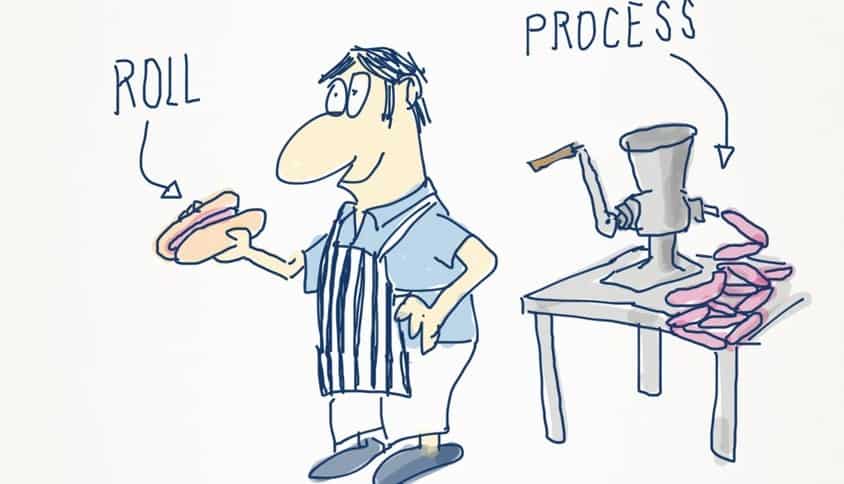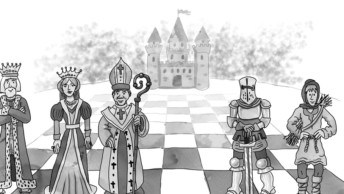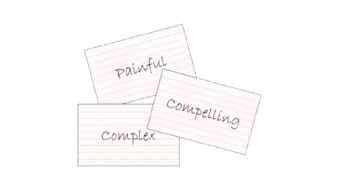Six points that help explain how you might add UX to your design team
Web industry professionals have mostly moved beyond labelling themselves as ‘web designers’ and the importance of a good user experience has been popularised in part by the Apple design aesthetic and other interface and gadget makers. There is a growing awareness that usability is important as the web matures, and staff are being added to design teams with the specific purpose of taking responsibility for user-friendliness and for setting a broader vision for how users might experience a product or service. But can UX be considered a job description? Or is it more of a process and set of design responsibilities? Why do these questions even matter?
In trying to pin down a comprehensive title for UX people have suggested names like Information Architect, User Experience Architect, Interface Designer, Interaction Designer, Usability Specialist, User Researcher or UX Professional. In the bigger or more specialised teams these may each have become specific roles, but the one title that seems to have stuck for smaller teams and freelancers is User Experience Designer.
1) It’s an impossible title, but that’s not important
“We don’t design a good experience, we design for a good user experience.”
When the title User Experience Designer began getting popular people questioned its validity by pointing out that you can’t actually design an experience. There are some good (albeit very semantic) reasons why that is true (Helge Fredheim articulated them well in his article Why User Experience Cannot Be Designed). However, a popular response countering this is that most UX designers don’t think they literally design every user’s exact experience – they just think about and practice designing for UX in particular.
2) The experience of a product or service is more likely to be affected by how it is designed than who designed it
By using a pseudo-scientific method and allowing the whole design team to respond to insights from real users the end result has far more likelihood of succeeding than if a single person in the team was charged with the care of UX responsibilities. A user-centred approach needs to be incorporated throughout a project’s strategy, design and development for it to be most effective, but that’s a UCD process, not necessarily a UX one.
3) A UX practitioner performs best within a collaborative environment
Collaboration may be with users, project stakeholders, designers or developers and to some extent these people therefore also perform UX tasks as part of their own roles. How can UX be called a separate role if all of these people also participate in user research and workshops, produce sketches and concepts, test them with users, apply usability best-practices or document features and requirements? Doesn’t that make everyone a UXer?
4) Users still need a champion for their needs during design
Although UX may be part of the team’s shared responsibility, there still needs to be an appointed ‘champion’ – someone to go into battle for them when it counts. The early stages of a web or mobile app project may be mostly driven by business strategy and marketing requirements. The design stages may better recognize the value of aesthetics, but could still struggle with remaining objective when responding to the brief. And developers may not necessarily solve code and interpret problems in line with the needs they’re building for, despite doing well with requirements. With understandable competing pressures, these different roles may assume they already know what is best for the user within their sphere of expertise. However, even when all of these roles participate in a user-centred design process it is still important to have someone managing the user experience across the project, and perhaps beyond – touching on other aspects of the user’s experience with the organization such as customer support, accounts or logistics.
5) UX is multi-disciplinary
People generally associate a UX professional with specific tasks such as interviewing users, producing wireframes or making usability recommendations. This suggests that UX is a particular role within a team. However, many jobs that may in essence be aligned with UX are advertised with different titles: business analyst, account coordinator, front-end developer, web-interface designer, product manager. In the same manner, UXers often come from diverse backgrounds in management, content, design and technology. UX covers a range of skills and perspectives and can borrow from an even wider range of disciplines.
6) There are multiple processes used by UX designers, and no single process fits everyone
All designers, projects, or even design teams and businesses have a preferred way of implementing a project. The nature of client/agency enagagement also differs fundamentally from how an in-house design team may work, so it’s not easy to define a UX process that works across the board. However UX does have a set of principles, and can be applied within, or to complement, many existing processes and frameworks such as Agile, UCD, waterfall, lean software development. If the core ideas of user input and iterative design are included, that goes a long way to being called a UX process.
* * *
Asking whether UX design is a role or a process is important because it helps us identify what we should be doing when we apply UX to a project, or as part of a team we’re working in. It also helps us articulate to others what it is that we UXers are doing.
On balance, we can see that UX needs a holistic approach and does best when embedded within a user-centred design team.In these cases UX might add to an existing process, and help drive collaboration throughout a project and even into the organisation itself. It’s not an isolated role, but a responsibility that needs to be held by everyone involved on a project. And yet the core skills aren’t necessarily an assumed competency of interface designers, front or back-end developers or project/product managers.
Depending on who can already do what, and the nature of each project, a team may be looking for very different skill sets in their UXer. They’ll still be looking for guidance, a high view of the user experience and a passion for championing the user’s perspective.
How do you describe your role, and how does this reflect the process you use? We’d love to hear what you think – please leave us a quick comment!





